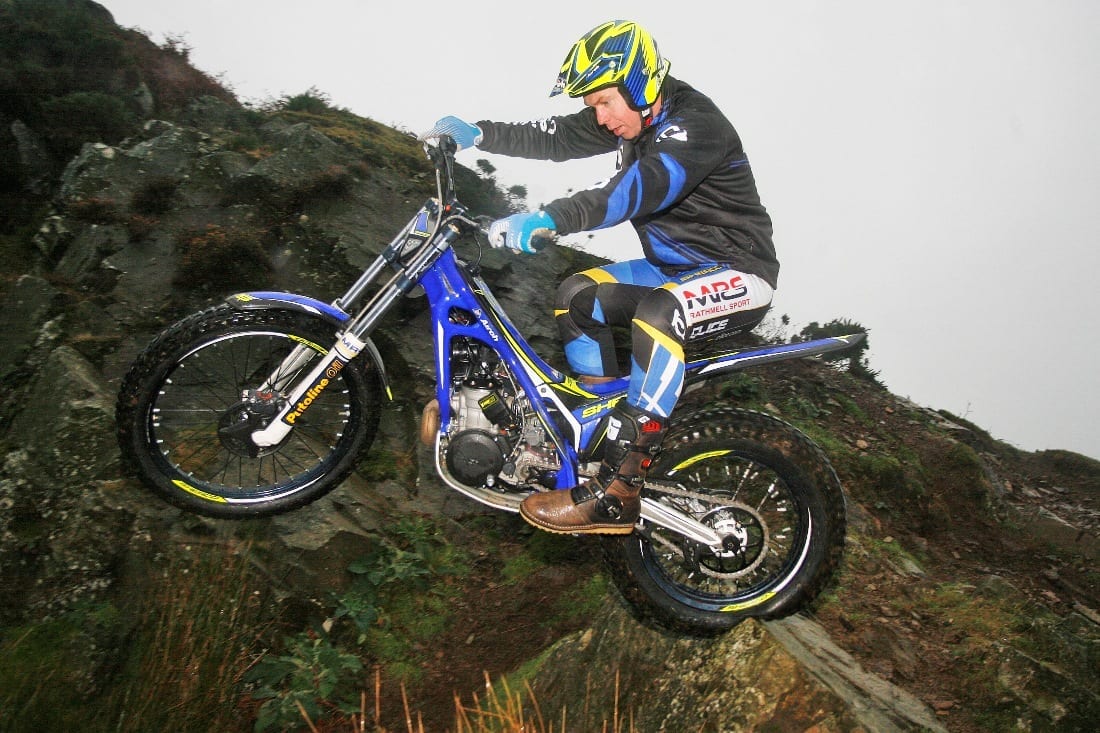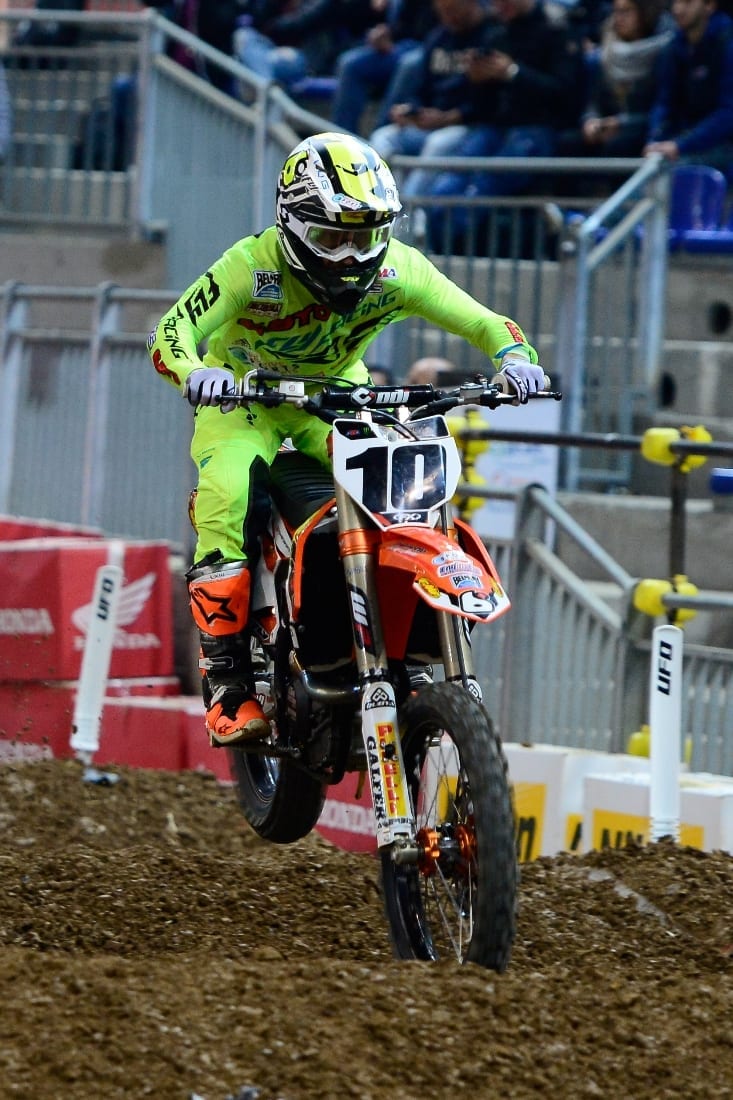On test: Sherco 2016 trials bikes
By John Dickinson on 10th Dec 15

For Sherco, 2016 is very much a back to the future experience.
Why? Well, the short story is that when Sherco was established as a marque by French enthusiast Marc Teissier in Barcelona, the city for so long the European hotbed of trials manufacture, back in 1999 it quickly established itself with a range of conventional models. In a nutshell, its simple five-speed two-stroke motor was mounted in an equally simple perimeter type steel tube chassis with the fuel tank sitting neatly between the top frame rails and the airbox behind the carb.
The Sherco design included nothing to scare the horses, and the marque soon established itself as a staple in the trials market, a worthy alternative to the stablished Gas Gas, Beta, Montesa and even Teissier's original baby Scorpa. Sherco was also to quickly establish a hardcore of loyal Sherco dealers - and riders.
Swapped
This initial basic design, with various chassis and engine tweaks in the annual updates, saw the bike evolve just fine right up to 2010. This was the year it all changed when they turned convention on its head and the fuel tank and airbox swapped places.
It was certainly a very neat looking model with a narrow upper section which contained the high-mounted airbox. The filter was beautifully protected and muck and water had to try really hard to get into the inlet tract.
The fuel tank was designed as a mirror image of the exhaust rear box and between them they formed the lower rear ‘mudguard'. A low pressure pump was required to lift fuel to carburettor float level and that was that.
This model was again tuned and tweaked each model year until – fast forward - we hit 2016 and BANG! – it's back to the future!
Yes, 2016 sees Sherco return to a conventional design with an all new frame housing the fuel tank nestling between the top frame rails and airbox in behind the carb. The main frame is still a perimeter style made from all chrom-moly steel with the round tubing connected to steel plate at the headstock and footpeg/ swinging arm pivot, designed of course for maximum strength and minimum weight.
When the tank was mounted rearwards the exhaust rear box may have been slightly compromised but now, with the airbox now back in the conventional position the exhaust has been given priority. As to the airbox itself, there is now a straight, short inlet which also gives a boost to performance.
A high, forward mounted airbox does have several distinct advantages (clean air, not as susceptible to water ingress) but the downside is a tortuous route to the inlet. You might not think this would make much difference but air turbulence is a science in itself and the bottom line is a straight, short inlet tract makes for improved performance. Hence the return!
So, we have a new frame incorporating a new bash plate, new fuel tank in black Polyamide (plastic) airbox and silencer. Apart from that, the Sherco follows traditional lines. Up front
is a pair of the excellent Tech forks while at the rear is a standard linkage system operating
the Sherco aluminium swinging arm via an R16V shock absorber. Brakes are the universal Braktec and rims are Morad. All three models are fitted with 28mm Keihin carburettors, the 250 previously sporting a Dellorto
Sherco have been guilty on occasion of some pretty garish colour schemes, mainly those yellow (ish) frames but the 2016 models are classy with a lustrous blue set off with white hubs and tasteful yellow graphics. They really do look good.
The engines offered are 125, 250 and 300cc and TMX got to ride all three on the same terrain, somehow dodging the worst of the rain that flooded Cumbria so devastatingly last week. On board was Darren Brice, who's three British Expert Championship titles included one (2013) on the rear tank model Sherco before making a switch to Beta, so Bricey knows as much as anyone about Shercos.
Says Darren: I have always ridden a 300 so that's what I started with on the day and to be honest there were no surprises. It's a really solid bike with a very strong motor that really does go when it's revving.
The riding position is good, you seem to have plenty of room to move forwards and backwards on the bike to find grip or balance and I found it very natural to ride. It does feel a little less bulky between your legs due to the changes and while it is not as narrow in the fuel tank area you don't notice that at all.
I love the front forks, Techs are superb, just so smooth and there is no ‘clonk' at either end of the stroke so whether you are hitting a rock step or dropping down off a ledge the front just does exactly as you expect.
The rear was a bit of a surprise actually as it was really lively right from the off. Usually they are as stiff as boards until you get a couple of hours of work into them. They say it has a new spring and new damper tuning but whatever, it was ready for riding a trial out of the box and felt really good, helping to dig down and find grip or help fire you up a step.
I jumped on to the 250 which had been warmed-up and to be honest I was quite surprised at how much I liked it. Obviously the chassis felt exactly the same but the motor was quite a surprise. I thought it was quite quick on the throttle but just that bit less fierce than the 300. I normally always choose the 300 in the range, whatever make I'm trying but to be honest I really liked this 250. I'd be really happy to enter a trial on it.
I guess the extra snap comes from the Keihin carb as the 250 always had a Dellorto before. If you wanted to take the sting out of it I'm sure it would be pretty easy either by richening the mixture a tad or tweaking the ignition. It isn't a wild engine by any means, just a little quicker off the bottom than I expected. Basically it is a very easy model to ride.
I used second gear for virtually everything we tried on the day. I never use bottom on any 250 or 300. And the clutch was perfect on all three bikes, the hydraulic action making it easy to use.
The 125 isn't really my thing, being a big lad, but it's amazing how it performs. Once you get it off the very bottom the engine is really strong. If you weigh a few stones less than me I can't really see how you would need more power.
The 125, as they all do, feels like it weighs half what the 300 does – it's all about centrifugal force from the piston and crank. The 250 also has the illusion of feeling much lighter than its bigger sibling and I like that.
Obviously bottom gear comes into its own with the 125 and it really will go anywhere. Like all 125s the engines are 100% better than they were just a few years ago but they don't have 250 type power. That's a good thing because they don't spin-out and at our test venue, with grassy banks as wet and slippery as you'll get, it gripped whatever you did with the throttle.
Actually, talking of grip, the test bikes came with Dunlop rubber and I wasn't sure what to expect but even on slippery, wet, steep slopes there were no worries and I had plenty of confidence in the tyres even turning on wet cambered bankings.
Malcolm Rathmell told me on the day that more and more older riders are turning to 125s and it's not surprising. It isn't all about capacity these days, it is how you tune the engines. There is no ‘better' model, it is all about the engine that suits you.
You just have to ride the bikes, they all do the job but in a different way. Like I said, I've always been a 300 rider – but I was really impressed with the 250 this time. Things aren't always what you expect...


